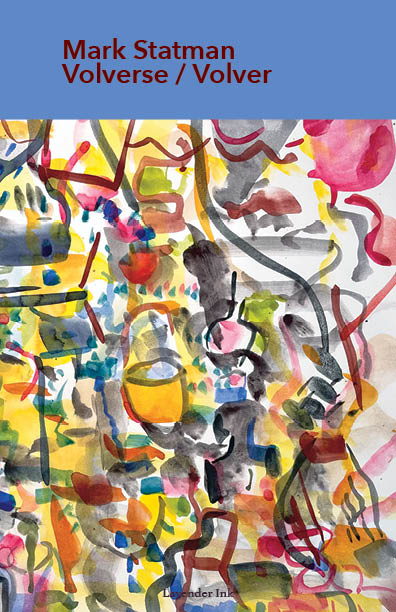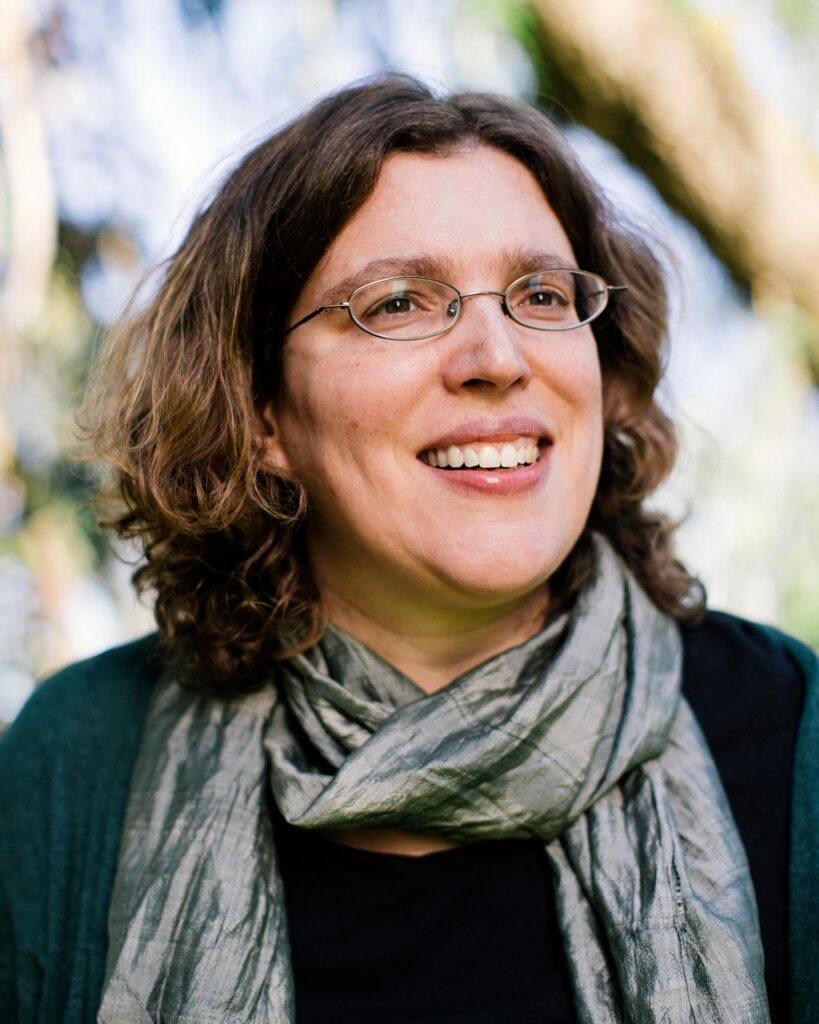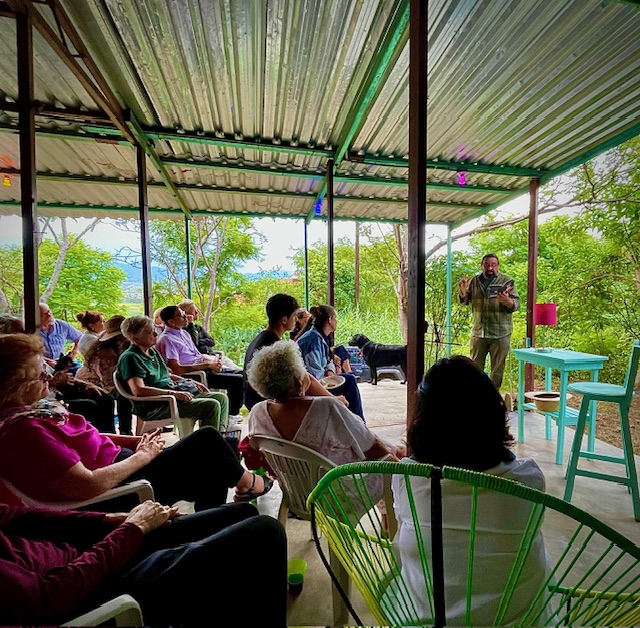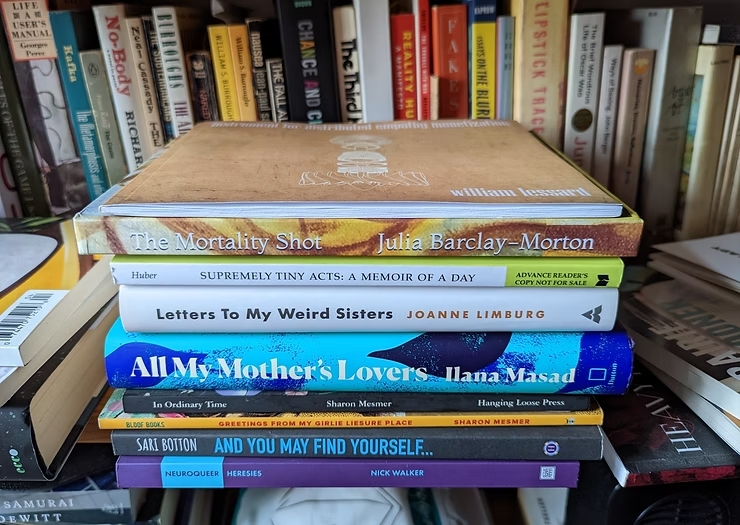
Part 2 MARK STATMAN: MEXICO AND THE POETRY OF GRIEF AND CELEBRATION
Part 2 of my interview with Mark Statman looks closely at Mark’s Latin American poetic influences, his life in Mexico and ends with an extract


I interviewed eco-composer Emily Doolittle, whose widely-performed music includes zoomusicological pieces inspired by animal songs, and a co-organising a words/music series Art Making in the Anthropocene. Emily has won a number of awards for her music, including an Opera America Discovery Grant, the Roberta Stephenson Award, a Sorel Organization Recording Grant, the Theodore Front Prize, two ASCAP Morton Gould Awards, and the Bearn’s Prize. She is an Athenaeum Research Fellow and Lecturer in Composition at the Royal Conservatoire of Scotland. As a musician and citizen, Emily takes an active interest in folklore, musical story-telling, music and gender, parenthood and creativity, and making music for and with children.
Leslie: As an oboist, violinist and composer, what first fired your interest in sounds, and turning those sounds into music? What’s the route you’ve followed in exploring/developing your own soundscapes?
Emily: I think my earliest such memories are actually of making up music to play on the recorder when I was 4 or 5. I liked the various sounds I could make, and liked inventing my own ways of writing them down on paper. I had a fairly improvisatory approach to learning the pieces we were taught in recorder class, and my teacher did not like that one bit! I’ve also been interested in the natural world for just as long – I spent a lot of time playing outdoors, and all of my imaginary friends were wild animals! But it took a long time for me to bring my love of sounds and my love of the natural world together. When I was a teenager, I started getting to know the work and writing of the Canadian composer R. Murray Schafer, who wrote a lot about the soundscape, and composed many site-specific outdoor pieces. I finally got the chance to participate in his “Environmental Music Week” and to participate in some of his collaborative outdoor works, beginning when I was about 20. That’s when I started thinking about how to bring the sounds of the outdoors into my music, and how to bring my own music outdoors.
Very often, though not always, my nature-related works are centred around exploration of animal songs, particularly birdsongs. I wrote my first birdsong-related piece, night black bird song, in 1998, shortly after moving to Amsterdam and hearing a European blackbird singing for the first time. I became fascinated by the way short bits of blackbird song might sound a lot like human music, but the entirety of its song would never be mistaken for human music. At the time, I thought that would be my one birdsong piece, and then I’d move on to another topic, but instead, learning the intricacies of blackbird song construction and variation made me curious about the songs of all 5000 species of songbirds! Of course I’ll never have time to explore them all, but I’ve really enjoyed getting to know in detail the song structures of the 30 or so species I’ve included in my music so far, and have many more that I’m looking forward to spending time with. I’m interested in other animal sounds too – whale songs, seal vocalizations, bat songs, insect sounds. I don’t usually include electronics in my music, but I do quite a bit of recording of birdsongs, and then using software to slow the sounds, and to visualize them using sound spectrograms. So the use of technology is often an essential part of my compositional practice, even though the resulting pieces are for acoustic instruments. Sometimes I also include sounds and textures from inanimate sources in my music – sounds from wind, water, fire, and so on. Or I use natural rhythms and processes more abstractly, to help structure my pieces.
Sometimes I write pieces for outdoor performance. These pieces are always quite flexible in pacing and structure, so the musicians can react to or interact with any outdoor sounds that come along. I think it’s important to careful when and where you play music outdoors: you need to make sure you’re not interrupting or frightening other species, and that they can come and go as they please. I do think sometimes there can be mutual curiosity about sound-making between humans and other species, and I love it when that happens. For example grey seals will approach people singing or playing music, and sometimes even start howling in response.
Leslie: If I came to a concert of yours, what might surprise me about the sights and sounds I’d encounter?
Emily: No matter who I’m writing for or what context the piece will be performed in, I like to maintain a balance between familiar and unfamiliar elements. Whether my piece is for a children’s piano recital or for a site-specific experimental ensemble, I’d hope that there would be enough familiar timbres, patterns, or structures for performers and listeners to feel welcomed, and enough surprises that they are never entirely certain what is going to come next. Or maybe I want the music to develop in a direction that feels entirely natural – nothing feels surprising in the moment – but then at the end you wonder how you got there. I think this is actually one of the reasons I’m so consistently drawn to animal songs – there are so many points of similarity between human music and the songs of many different species of animal, but then the animal always takes the song in a direction I’m not expecting!
Leslie: What have been your most important discoveries & realisations as a zoomusicologist?
Emily: I began my zoomusicological research because of my interest in the sound of various animal songs, but after having been a zoomusicologist for almost 20 years, I’d say that I’m equally interested in the interdisciplinary nature of the research itself. (I don’t mean that my interest in the sound of the animal songs has diminished at all – just that I’m equally passionate about interdisciplinarity!) I love being able to read widely from different fields which somehow touch on birds and birdsong – musicology, literature, philosophy, ecology, eco-criticism, history, biology, psychology, agriculture, visual arts – and collaborating with researchers in all these different areas. If you stick within your own field, you start to think of certain ways of working as the only ways you can work, certain kinds of questions as the only kinds of questions that can be asked, certain kinds of knowledge as the only things that can be known. As soon as you start collaborating with people in other fields, you discover all kinds of new ways of thinking, understanding, and being.
I think my zoomusicological research that I’m proudest of is my ongoing research on the hermit thrush. Beginning in 2007, I started researching its song in collaboration with scientists Tecumseh Fitch, Bruno Gingras and Dominik Endres, and we discovered that its song is based on the overtone series. I subsequently returned to this research, using it to illustrate why musicians and scientists need to work together to better understand animal song. Most recently, I explored historical writing about the hermit thrush, which was fascinating because it showed how cultural, nationalist, and colonialist attitudes have affected our understanding of the bird, and continue to do so even now. I’ve also explored the song in several compositions, including Utah, 1996, which is a fairly direct transcription of a hermit thrush song; REEDS, which is a site-specific outdoor work; and Woodwings, which contains a semi-improvisatory movement in the style of a hermit thrush.
Leslie: What are the stages of composition for you? How do they vary, how do you edit/intervene to avoid ‘sameness’ in your music?
Emily: Oh, I wish I knew! Even though I’ve been composing for more than 30 years, it’s never an easy process. Whenever I need to start a piece, there’s always a period of time—sometimes days, but often weeks or months—when I think I’ll never come up with an idea again, that I’ve completely forgotten how to compose, that every piece I’ve written previously was just a fluke, and that it’s all over now and I’ll never write another piece! I have to make myself sit down at the piano (or desk or computer or with a notebook outdoors) and start trying to think of something anyway – I’m not one of those composers who can wait until I feel inspired, because if I wait it will never happen! But ideas always do come along eventually, if I can just make myself try to work on the piece often enough! Once I do have an idea, there’s a lot of hard work – extending the idea, moving it around, contrasting it with something else, etc. Eventually the shape of the piece becomes clear in my mind, and things are a bit easier from there on – it’s like the piece already exists, and I just have to figure out what it is. When the piece is about 2/3 done, I like to print it out and tape it up all across the wall. I find that thinking about the piece visually as well as aurally helps me find a satisfying structure. Sometimes the best bits of the piece come in at the very end: the piece is basically complete and works well, but I make some tiny last-minute tweaks that ends up being my favourite parts of it!
As for avoiding sameness, I don’t actually worry about that too much. In composition, at least recently, there’s this idea that each piece by a composer should be totally different than all the others, but I don’t think you have the same idea in visual art – many visual artists do multiple takes of the same idea. I think historical composers also weren’t so obsessed with the idea that each of their pieces should be totally different from all their others: for example I don’t think Mozart planned his piano sonatas to be maximally contrasting with each other! What matters is being interested in what you are writing! So if a composer continues to feel interested in exploring similar material in different pieces, they should do that. If they start to feel bored, then it is time to move on to something else! Sometimes I worry that I’m starting to feel bored, but inevitably a new idea comes along that captures my interest instead, or I discover new facets to an older idea.

Leslie: How has the current climate and ecological breakdown changed what you compose and the emotions you experience through music?
Emily: Another good—and difficult—question! It seems that musicians are talking a lot these days about whether a piece of music about climate change or environmental breakdown can change people’s behaviour or understanding for the better, or whether it just makes the musicians feel like they are engaging, but actually distracts them from real activism or political engagement. My own feeling on this is that of course any one piece about climate change is unlikely to make a big difference, but that a larger cultural movement in which many musicians and artists make art about the environment is both essential and inevitable. There’s never going to be environmental change if people don’t feel like it’s a really important issue: and if it’s an important issue (which of course it is) then of course musicians will write about it, and all the music and art about it will in turn be part of what helps people internalize how important it is. If there’s just one piece about climate change, then the people who don’t want to engage with the issue might just turn towards something else, but if there is climate art wherever people look, many more people are going to realize it is something they have to think about and deal with whether they want to or not. Music has been a huge part of many social movements, such as ending the Vietnam War and ending commercial whaling. It’s going to be a huge part of tackling climate change too.
As for my own music: I’ve been writing music based on animal songs and other environmental sounds since 1998, since before there was such widespread discussion of climate change. I’ve always cared about natural spaces, and although I don’t see my music as primarily activist, I do hope it will subtly increase people’s interest in and caring for the world around them. When I started writing animal song-based music and doing zoomusicological research, it felt very much like a fringe activity – I didn’t know that many other people who were doing similar things (though there were some, such as David Rothenberg and Dario Martinelli and Hollis Taylor). Now it is suddenly very “in”! I think I tend to process my fears about the future alone or in discussion with people, and tend to put my love for animals and for the natural world into my music.
Next week I feature Liberian poet Edwin Olu Bestman who writes about war and loss in magical and surprising ways.
ABOUT LESLIE TATE’S BOOKS:

Part 2 of my interview with Mark Statman looks closely at Mark’s Latin American poetic influences, his life in Mexico and ends with an extract

I interviewed international poet and translator Mark Statman about Volverse/Volver, his 14th published collection. Mark, who has won national arts awards, is Emeritus Professor of Literary

I interviewed Lisa Dart, finalist in the Grolier, Aesthetica and Troubadour Poetry Prizes and author of The Linguistics of Light (poems, Salt, 2008), Fathom (prose

I interviewed writer Julia Lee Barclay-Morton about her experience of autism. Julia began as an experimental dramatist in New York, moving to the UK to

I interviewed Gillean McDougall from Glasgow, who edited the collaborative projects Honest Error (on Charles Rennie Mackintosh and his wife Margaret Macdonald) and Writing the
| Cookie | Duration | Description |
|---|---|---|
| cookielawinfo-checkbox-analytics | 11 months | This cookie is set by GDPR Cookie Consent plugin. The cookie is used to store the user consent for the cookies in the category "Analytics". |
| cookielawinfo-checkbox-functional | 11 months | The cookie is set by GDPR cookie consent to record the user consent for the cookies in the category "Functional". |
| cookielawinfo-checkbox-necessary | 11 months | This cookie is set by GDPR Cookie Consent plugin. The cookies is used to store the user consent for the cookies in the category "Necessary". |
| cookielawinfo-checkbox-others | 11 months | This cookie is set by GDPR Cookie Consent plugin. The cookie is used to store the user consent for the cookies in the category "Other. |
| cookielawinfo-checkbox-performance | 11 months | This cookie is set by GDPR Cookie Consent plugin. The cookie is used to store the user consent for the cookies in the category "Performance". |
| viewed_cookie_policy | 11 months | The cookie is set by the GDPR Cookie Consent plugin and is used to store whether or not user has consented to the use of cookies. It does not store any personal data. |